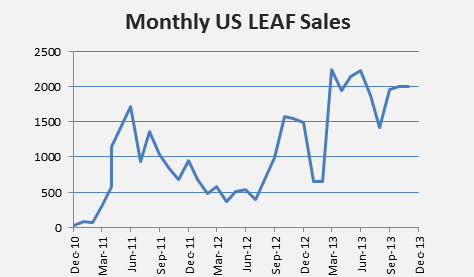
Why electric cars will make it this time around
The above internet meme has been making the rounds lately. We haven’t taken the time to review the correctness of the information relayed by the words in the photos, but certainly the argument can be made that the cost of computer storage, its size, and its weight have all been significantly improved upon over the past thirty years or so. While there are dramatic differences between the computer industry and the automotive industry the core theme of the idea represented above still holds true for both.
It is clear that the launch of the Nissan LEAF in December, 2010 in California created the modern era of the electric vehicle (EV). Some may claim that the GM EV1 restarted it all, but the EV1 lived an unfortunately short, and even less impactful, life. Others might try to lay the mantle on Tesla with the introduction of the Tesla Roadster in 2008. The obstacle with that idea is that the Roadster cost well over $100,000 and just 2,500 were sold globally over the four year span of its life. That, and it wasn’t really a Tesla, but a re-purposed Lotus. LEAF offered the EV to the masses – and now the masses are starting to respond.
Below is a chart showing the cumulative sales of the Nissan LEAF in the United States since its launch in late 2010.

It took less than six months for the LEAF to sell over 2500 units in the United States alone. What we find interesting about the chart is that the rate of sales is accelerating through the second half of 2013. Sales numbers for December 2013 have not yet been reported, but it is safe to say that LEAF will have sold over 40,000 units in the US by the end of the year. We think it is safe to say that LEAF, and EVs in general, are gaining greater consumer awareness resulting in more sales.
Below is a much more ragged looking chart, as we see how the LEAF has done on a month-by-month basis.

[UPDATE: Nissan sold over 2,500 LEAFs in December, 2013 – LEAFs best sales month ever – bringing the total easily over the 40,000 mark on the first chart.]
Two steps forward, one step back
Off to a booming start in its first several months, the impact of the tsunami that hit Japan in March of 2011 is clearly evident on the chart. Vehicles made and shipped prior to that point were sold through June but as production plummeted so did sales. It took almost a full year to recover any kind of month-to-month sales momentum. By then LEAF production had started to return to pre-tsunami levels and sales rebounded quickly through the end of 2012. So what happened in January and February of 2013 to cause the severe ravine seen on the chart. Nissan moved US LEAF production to Tennessee from Japan. They chose to sell down the 2012 model year quickly with the advent of a new locally built LEAF on the horizon. With US production, Nissan lowered the price of the 2013 LEAF, and offered a new lower cost model with fewer features and did not want any 2012s on the lots when the 2013 landed. When LEAF production began in January of 2013 it took some time to distribute the new 2013 around the country. But the results can be seen clearly on the chart. With US production, the Nissan LEAF is selling more, and generally more consistently, than ever before. All of this with essentially no significant changes to the driveline since its introduction. That is to say, no significant change in driving range. This is where the internet meme image above comes in.
Our contention is that LEAF 2.0 will not come out until the 2016 model year. We have stated this as our position since the LEAF first came out, as Nissan generally operates on about a five year life cycle for their vehicle models. We already know that the 2014 LEAF offers minor changes (a standard rear view camera and some improved in-car telematics). We expect similar small improvements for the 2015 model year. The 2016 model year LEAF is when we may see the cumulative sales graph above start to ramp up even more steeply. The key is lower priced battery pack components, in smaller packages, that weigh less. Sound familiar? While the advancements in battery technology will not come as quickly in the EV age as the computer storage improvements came in the development of the PC era, they will come. We have already written many stories about studies, developments, and improvements in the development of not only lithium ion batteries, but alternative battery chemistries for EVs. (Search “battery development” in the search bar in the column on the right). As the slow evolution in battery technologies makes its way into the marketplace, we will see battery prices drop, EV driving range increase, and we will also see many more true extended range EVs like the BMW i3 (with its Range Extender option) come to market for those that must rely on one car but like the idea of using an EV for most of their driving.
Toyota has done the world a favor with its successful Prius vehicles. Many consumers have demanded improvements in their gasoline vehicles’ fuel economy as hybrid vehicles offered 40+ mile per gallon (mpg) alternatives. As Hybrid technology improved and is now pushing the 50+ mpg range, and gasoline technology is getting into the 40s, more consumers are looking for alternatives that save them even more on fuel costs. EVs are the next step for many of these consumers. When the next generation of EV batteries makes its way to the cars that we drive in a year or two, look for interest, and demand, to continue its rising path. Those are our thoughts. What do you think?
Happy New Year!
